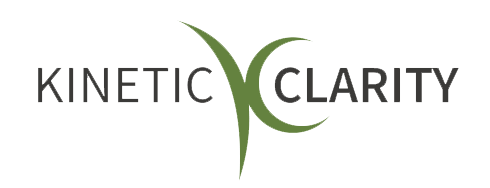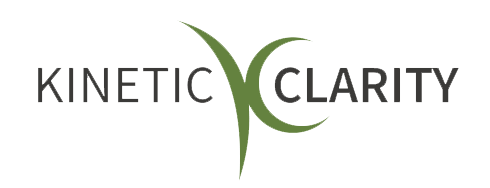Empowering Leadership: The Key to Retention, Performance Management, and Talent Development
Transform leadership, transform your organization.

The role of a Chief Human Resources Officer (CHRO) extends far beyond managing payroll and benefits. As a CHRO, you’re tasked with cultivating a thriving organizational culture, ensuring your company remains attractive for top talent, and driving performance through effective leadership. Focusing on leadership can transform these areas and drive organizational success.
Improving Retention Through Leadership
Retention is a perpetual challenge, particularly in dynamic industries with abundant opportunities. High turnover rates can disrupt productivity, diminish morale, and incur significant costs. Investing in leadership development can create an environment where employees feel valued, engaged, and aligned with the company’s vision. Here’s how.
Build trust and engagement.
Effective leaders cultivate trust and engagement within their teams. As Brené Brown and many others have shown, trust is the foundation of any strong relationship. In the workplace, it translates to higher levels of loyalty and commitment. Leaders who are approachable, transparent, and empathetic foster an environment where employees feel safe and respected. This psychological safety encourages open communication, innovation, and a strong sense of belonging, significantly reducing turnover rates.
Promote career growth and development.
Employees are more likely to stay with a company that invests in their growth. Leadership development programs should include mentorship and coaching opportunities, allowing emerging leaders to guide their teams effectively while supporting individual career aspirations. Employees who see a clear path for advancement and professional growth are more motivated to remain with the organization.
Driving Performance Management
Performance management is another critical area where strong leadership makes a significant impact. Effective leaders not only set clear expectations but also inspire their teams to exceed them.
Set clear goals and expectations.
Establish and communicate clear goals and expectations. This clarity helps employees understand their roles and responsibilities, aligning their efforts with the company’s strategic objectives. Regular check-ins and feedback sessions ensure that everyone stays on track and any issues are addressed promptly.
Encourage continuous improvement.
A culture of continuous improvement is vital for maintaining high performance. When you prioritize development and learning, you create an environment where employees are motivated to proactively seek new skills and knowledge. Encouraging this mindset helps individuals grow and adapt, driving the organization's collective success. Regular feedback, goal setting, and recognition of efforts are key components of fostering such a culture.
Recognize and reward achievements.
Recognition and rewards are powerful motivators. Regularly acknowledge and celebrate the achievements of your team members. This recognition can be formal, such as performance bonuses and promotions, or informal, such as public praise and personal notes of appreciation. By valuing contributions and celebrating successes, leaders can boost morale and sustain high levels of performance.
Nurturing Talent Development
Talent development is essential for building a resilient and adaptable workforce. Through strategic leadership development, you can ensure that your talent pipeline remains robust and capable of meeting future challenges.
Identify high-potential employees.
Identifying and nurturing high-potential employees is crucial for talent development. Leaders should be trained to recognize potential and provide opportunities for growth. This might include special projects, cross-functional assignments, or leadership training programs. Giving high-potential employees the chance to develop their skills and leadership capabilities prepares them for future organizational roles.
Provide access to learning and development resources.
Continuous learning is a cornerstone of talent development. Leaders should facilitate access to a wide range of learning and development resources, from formal training programs to online courses and workshops. Offering diverse learning opportunities helps employees stay current with industry trends and enhances their ability to contribute effectively. This investment in their growth benefits individuals and strengthens the organization’s competitive edge.
Create a culture of feedback and mentorship.
A culture that values feedback and mentorship is vital for talent development. Leaders should be equipped to provide constructive feedback and serve as mentors, guiding employees through their career journeys. This supportive environment enables employees to learn from their experiences, build on their strengths, and address areas for improvement.
Wrapping It Up: The Strategic Impact of Leadership Development
Investing in leadership development isn’t a reactive measure. It’s a proactive strategy that addresses retention, performance management, and talent development. By fostering strong leaders, you create an environment where employees feel valued, motivated, and equipped to excel. This investment pays dividends in the form of a loyal workforce, enhanced performance, and a deep pool of talent ready to drive the organization forward.
As a CHRO, your commitment to leadership development is a commitment to your company's sustained success and growth. Navigate the complexities of today’s business landscape with confidence and agility, ensuring that your organization thrives.
If you're ready to invest in your leaders and the culture of your organization, we can help. Take advantage of over 25 years of excellence in organizational change management. Contact Kinetic Clarity today.
Contact us to talk about your executive coaching needs.
We will get back to you as soon as possible.
Please try again later.
Kinetic Clarity | All Rights Reserved |
Created by Olive + Ash.
Managed by Olive Street Design.












